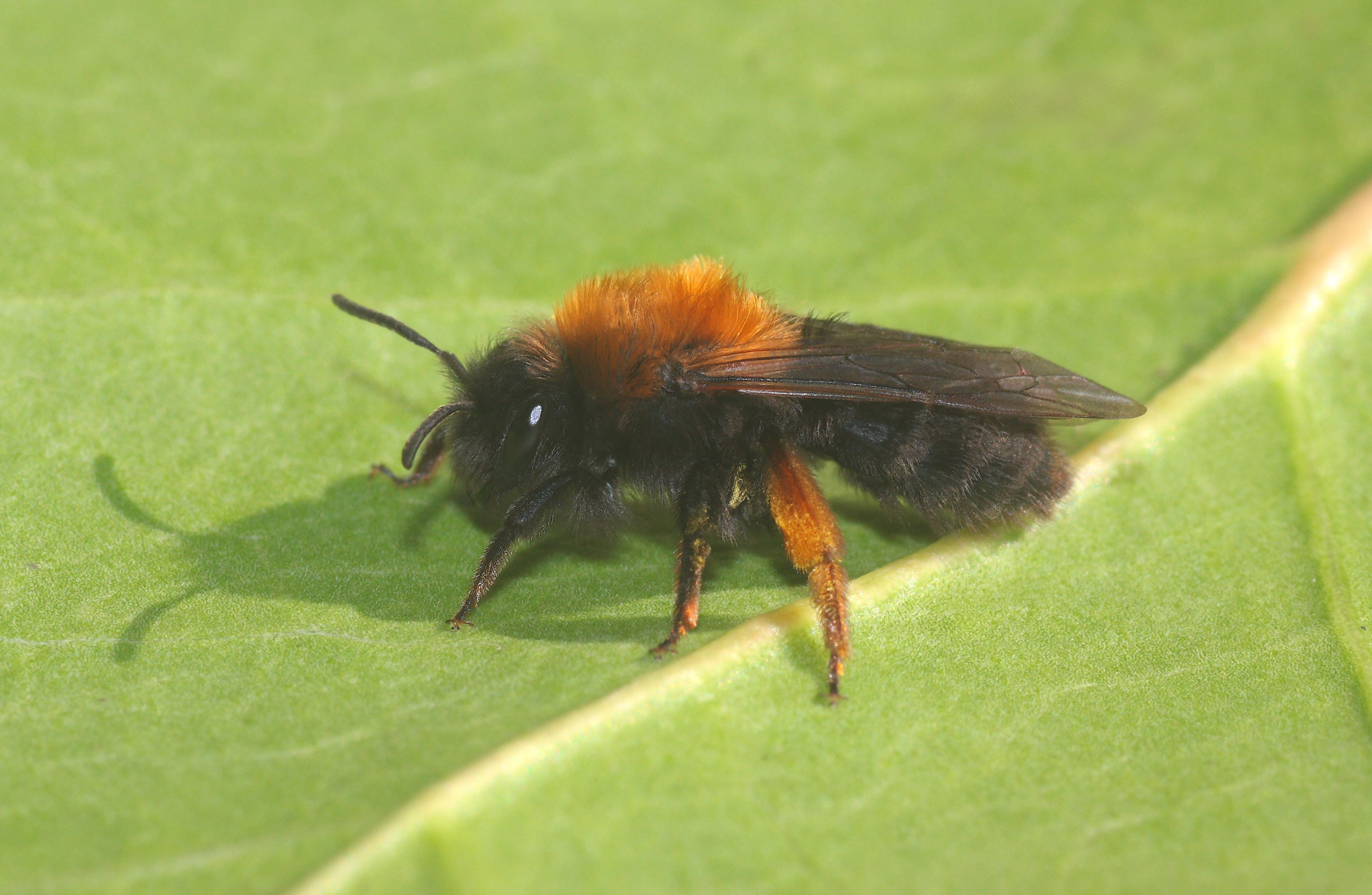DESCRIPTION: Size 13 - 16mm. Females are large, bulky insects with a thorax covered with brown hairs matching the colour of the scopae (a small brush-like tuft of hairs on some insects, especially that on which pollen collects on the leg of a bee). The face is covered in black hairs and the hind tibiae is yellow/orange. Males are primarily golden-haired but have black hairs on the side of the face. The hind tarsi and distal part of the hind tibiae are orange. BEHAVIOUR: Seen to be feeding on Salix catkins and very fond of sun-bathing on fenceposts. It uses a variety of habitats and soil types and can form large nesting aggregations in earth banks and along well-trodden footpaths. It is attacked by the cleptoparasitc bee Nomada leucophthalma. DISTRIBUTION: Local but widely distributed in the UK. HABITAT: Can be found almost anywhere where Salix occurs due to these trees providing the main source of pollen.PERIOD: A spring flying species best seen from mid-February to April.

